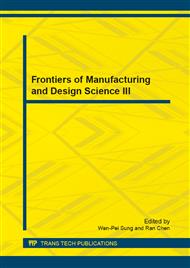p.1206
p.1211
p.1218
p.1224
p.1229
p.1234
p.1239
p.1244
p.1249
The Simulation Study on Degree of Protection/Damage under Blast Loads
Abstract:
The degree of protection/damage of the target is an important basis for the target structure design. In the military field, the target can be equivalent to a target metal plate with the certain thickness. The degree of protection can be divided through the effect of target plate under blast loads. Considering the reflected parameters, the reflected pressure-impulse criterion can be used to assess the damage caused by the blast. Through the combination of theoretical analysis and numerical simulation, the target plate’s pressure-impulse diagrams of different degrees are obtained. The results of the experiments and simulations are found in good agreement, which validates the numerical model.
Info:
Periodical:
Pages:
1229-1233
Citation:
Online since:
December 2012
Authors:
Keywords:
Price:
Сopyright:
© 2013 Trans Tech Publications Ltd. All Rights Reserved
Share:
Citation:


